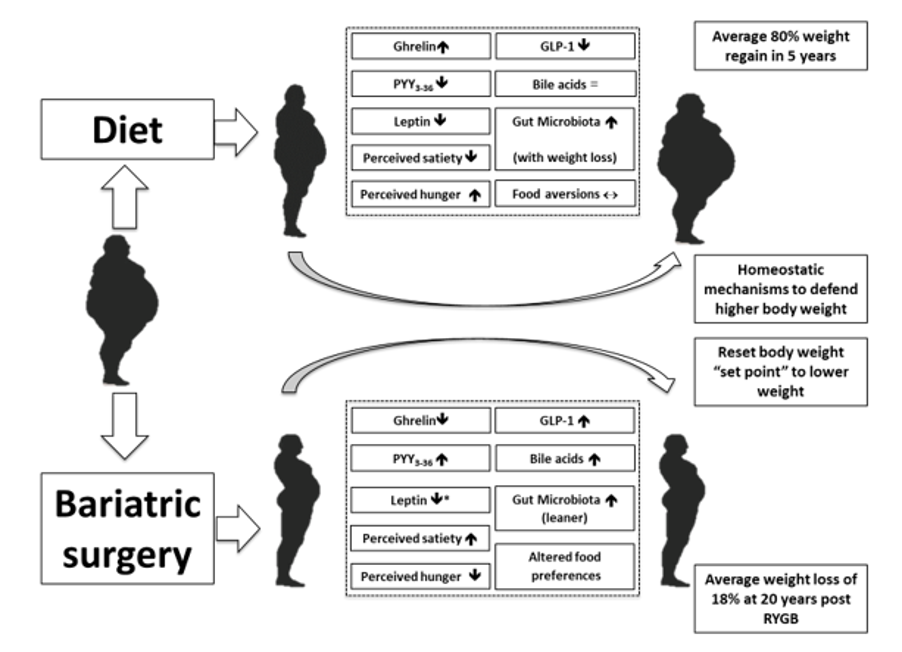
Figure 9. Schematic diagram illustrating the different biological changes induced by weight loss achieved through dieting (upper part) compared to bariatric/metabolic surgery (lower part). Powerful compensatory biological changes contribute to the high rate of weight recidivism observed following lifestyle intervention weight management. Many homeostatic mechanisms act to restore a higher body weight and these includes hormonal alterations and a decreased energy expenditure leading to increased hunger and energy consumption. By contrast, bariatric surgery leads to a favorable biology that includes increased satiety hormones, reduced ghrelin, enhanced BA secretion and a “lean” microbiota. Together these mechanisms lead to reduced hunger and a shift towards healthier food options with a resetting of body weight “set point” to a lower level facilitating meaningful and sustained weight loss. References for this figure: (149, 158, 159). Abbreviations: GLP-1, glucagon-like peptide 1; PYY3-36; peptide tyrosine-tyrosine 3-36. *Suggestion that leptin sensitivity may improve
